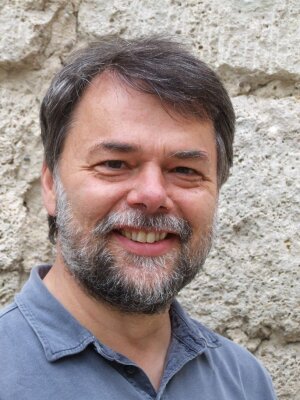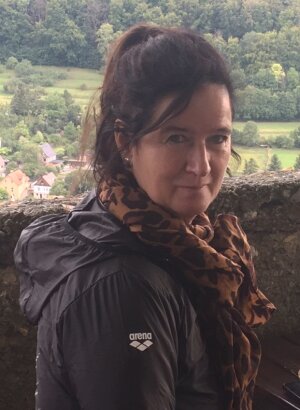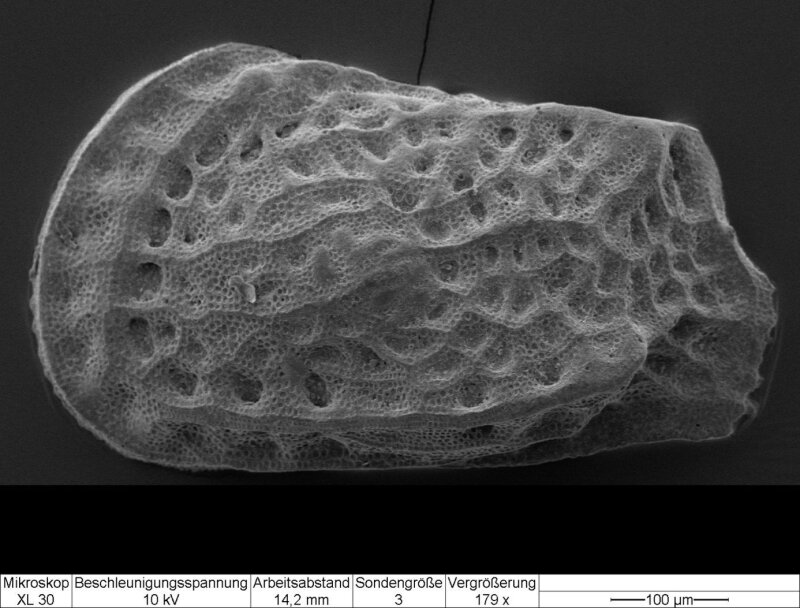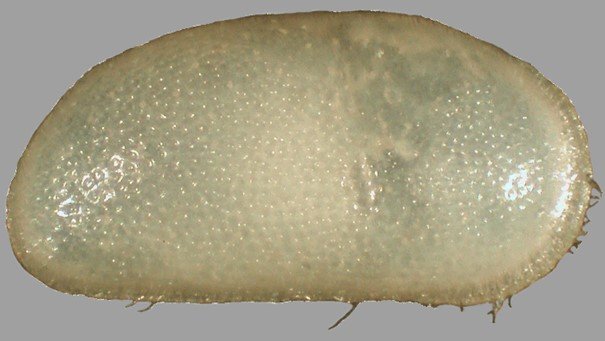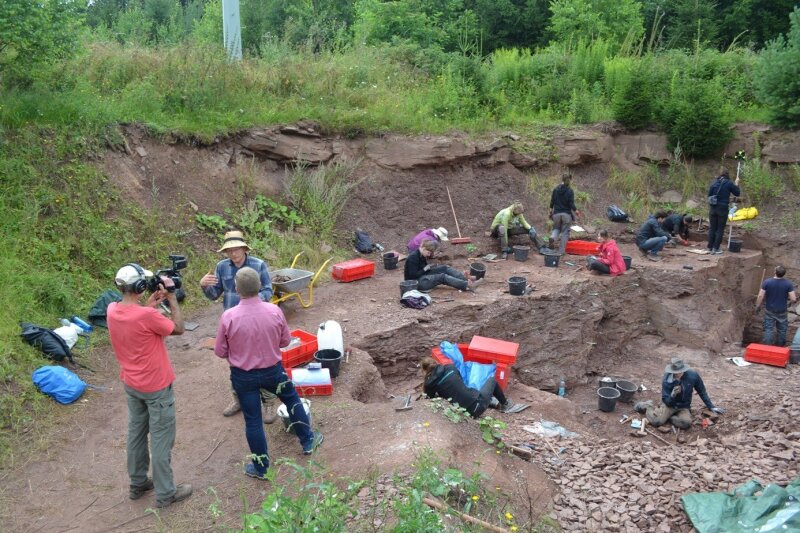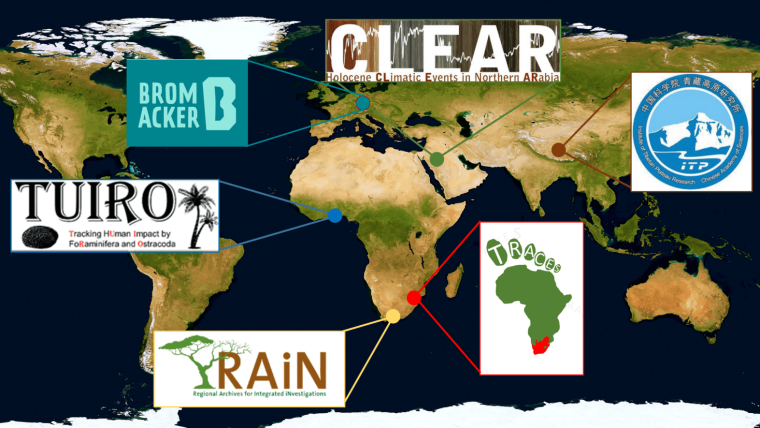
Paleontology
Our group investigates and teaches in the field of paleontology; the subject of this research are fossils. They represent important evidence about the history of the earth and the development of life. Fossils help us to understand the complex relationships between the biosphere, hydrosphere, geosphere and atmosphere, as well as processes occurring over long periods of time; thus, paleontology provides insights into our origins as humans and our responsibility for the Earth's ecosystems.
Paleontological research is about documenting fossil organisms and about reconstructing their way of life, and using them as indicators of the paleoenvironment, of diagenetic changes, and of the age of the rocks containing them. Our approach is primarily application-oriented, meaning that we use fossils and fossilizable organisms living today in paleoecology and paleoclimatology, environmental research, georisk assessment, geoarchaeology, and biostratigraphy. Our study areas are largely in Central Europe, the Mediterranean, Central Asia, western and southern Africa.
Our research is mainly micropaleontological. The taxonomic focus is on ostracodes (shell crustaceans), small crustaceans with a double-flap carapace of calcite, and foraminifera, usually shell-bearing unicellular organisms. Both are classic groups of micropaleontology and occur in virtually all waters in often large numbers and high diversity, with foraminifera usually restricted to the oceans. Ostracodes and foraminifera can be used to study aquatic sediments throughout the Phanerozoic, i.e., throughout Earth's history, which is well documented with fossils. For paleoecological studies, however, we also draw on other groups of organisms, such as molluscs, and collaborate with many research groups on an interdisciplinary basis. In addition to the numerous fields of application, this concerns shell chemistry, geochemistry and sedimentology. Our principal methods are therefore field work, sediment sample preparation, various imaging techniques (light microscopy, electron microscopy, microtomography and photogrammetry), chemical analysis and multivariate statistics.
We are convinced that paleontology within the geosciences has a great potential for knowledge transfer and communication of scientific knowledge due to its great popularity among the general public. We try to use this potential through active public relation work.
-
Apl. Prof. Peter Frenzel
Learn more dePeter Frenzel
Image: Peter FrenzelLehrstuhl Allgemeine und Historische Geologie
E-Mail: peter.frenzel@uni-jena.de
Tel.: +49 3641 9-48619
Fax: +49 3641 9-48622Raum H 110
Burgweg 11
07749 Jena -
Dr. Anna Pint
Learn more deAnna Pint
Image: IGWE-Mail: anna.pint@uni-jena.de
Tel.: +49 3641 9-48724
Fax: +49 3641 9-48622Raum H310
Burgweg 11
07749 Jena -
Ella Quante
Learn more deInhalt
-
TRACES
"Dem Einfluss von Mensch und Klima in Südafrika auf der Spur: Biodiversität und Bioindikatoren I - brackisch-marine Systeme" (BMBF 03F0798A)"
2018 - 2021
-
RAIN 2
Mikropaläontologie: Klimaindikatoren in limnischen und marinen Sedimenten“ Südafrikas (BMBF 03G0862B)
2016 – 2018
-
CLEAR
Holozäne Klimaereignisse in Nordarabien - Umweltveränderungen und menschliche Reaktionen" (DFG FR1489/5) (gemeinsam mit M. Engel und B. Plessen)
2015 - 2018
-
RAIN
Learn more deMikropaläontologie: Klimaindikatoren in limnischen und marinen Sedimenten“ Südafrikas (BMBF 03G0840B)
2013 – 2016
-
SPP 1372 TiP
Learn more deMikrofossilien als Indikatoren für die Entwicklung aquatischer Ökosysteme und die Dynamik des Monsuns (DFG FR1489/4)"
2011 - 2014
-
Spätquartäre Veränderungen des Wasser- und Monsunsystems auf dem tibetischen Plateau
Spätquartäre Veränderungen des Wasser- und Monsunsystems auf dem tibetischen Plateau (Landesgraduiertenstipendium für eine betreute Doktorandin)"
2011 – 2014
-
SPP 1372 TiP
Mikrofossilien als Indikatoren für die Entwicklung aquatischer Ökosysteme und die Dynamik des Monsuns" (DFG FR1489/2-3)
2008 - 2011
-
Mikrofazielle, paläontologische und geochemische Untersuchungen zur Genese der Homo erectus-Fundstelle von Bilzingsleben
Mikrofazielle, paläontologische und geochemische Untersuchungen zur Genese der Homo erectus-Fundstelle von Bilzingsleben (Landesgraduiertenstipendium für einen betreuten Doktoranden)
2008 – 2011
